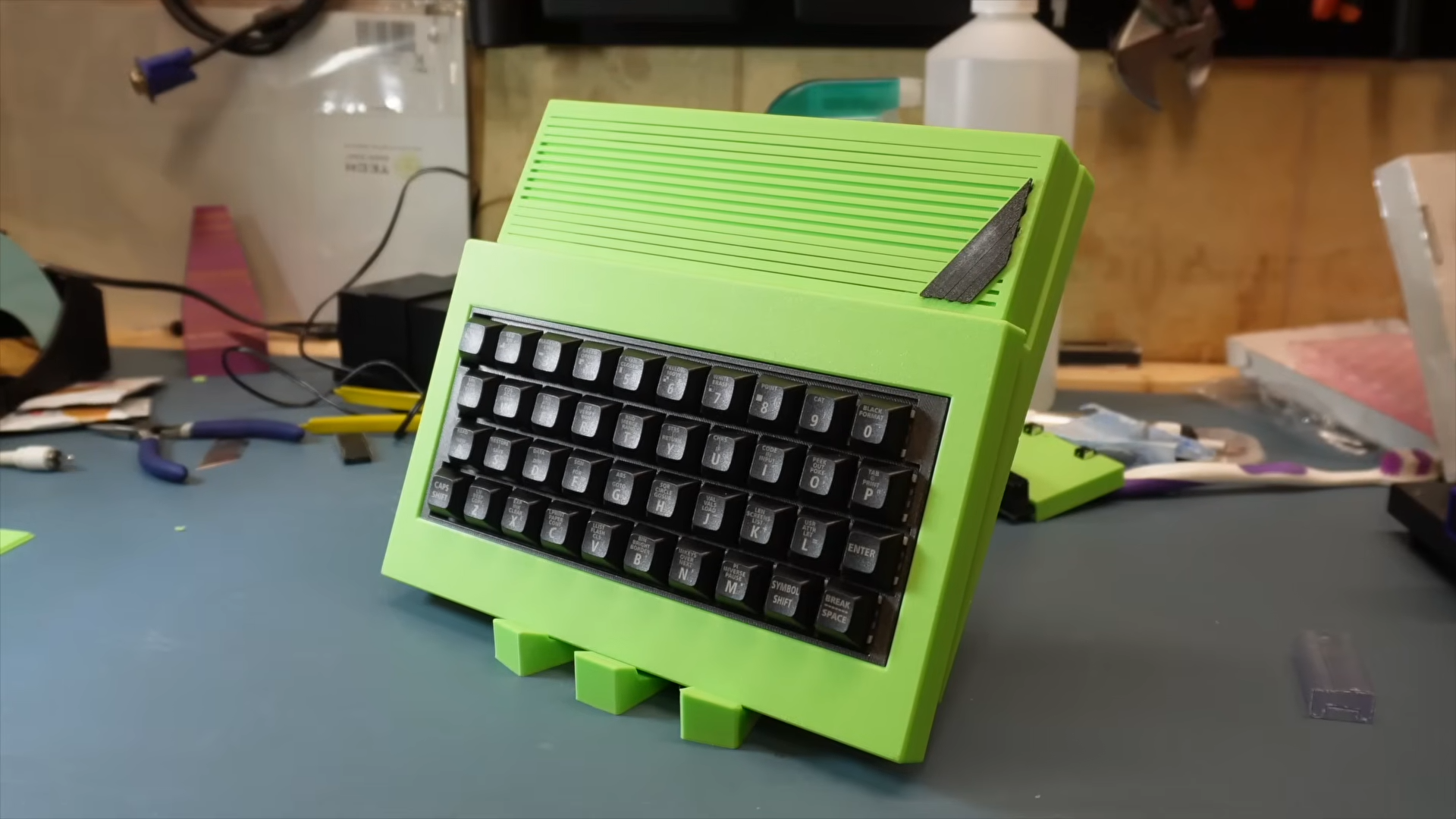
Everything old can be made new again.
Despite its reign ending decades past, the ZX Spectrum is still fondly remembered as a titan of British computing. Indeed, Sinclair superfans are still dreaming up weird and wonderful projects to this day, even implementing ray-tracing on the 80’s home computer.
So popular a pastime is tinkering with this historic hardware, that it’s actually quite easy to build your own ZX Spectrum using entirely new parts (via Hackaday). A case in point is a recent build from tech creator Tech Made Easy UK. Interestingly, he says in his build video that he has no childhood nostalgia for the original machine and that it’s the community’s continuing enthusiasm that piqued his interest in the retro home computer.
However, having picked up a few different models, TME explains he was left unimpressed with either the ZX Spectrum +’s oddly shaped, low-profile keys or the ZX Spectrum +2’s bulk crowding his desk. The right key feel, a compact form factor, and wide-ranging software compatibility were key parts of the creative vision behind this custom build.
TME first picked up a kit from Byte Delight that includes a snazzy Superfo Harlequin PCB, a modern board that both replicates the functionality of the ZX Spectrum’s original Uncommitted Logic Array and is, in theory, compatible with all 16, 48, as well as 128K Spectrum games. Though pre-assembled kits are also available from Byte Delight, TME elected to save some money and solder the components himself.
After a few false starts, the board boots into the included diagnostic ROM. Swapping this chip out for one with a 128K system ROM burned onto it, the build is finally ready for its custom 3D printed, lime green case from Lee Smith’s Workshop (unfortunately, now sold out).
Besides the fetching colour or the pleasing clicky-clack of the built-in mechanical keyboard, the project includes at least one more head-turning, modernising feature. Though this build can be hooked up to a traditional tape deck, a SMART card from Retroleum allows the ZX Spectrum to access ROM files from a MicroSD card in seconds (as opposed to the original tapes’ minutes-long load times).
So, while this build is not the most authentic ZX Spectrum experience, it’s definitely more practical if all you want to do is mess around with Manic Miner for a few minutes more. And though original ZX Spectrums have stood the test of time this long, a new build like TME’s project can ensure none of your museum pieces become overtaxed.
This is definitely not a beginner-friendly build though; with parts costing close to £230, it’s not the cheapest if you fancy having a go at crafting something similar yourself—it’s also just a wee bit intimidating if you’re not already handy with a soldering iron.






